It’s been a little over five years since I started this blog, and rather fittingly, I am reviewing a book by the illustrator who inaugurated this space – Sebastian Meschenmoser, a German artist with an unusual flare for drawing squirrels. That original review of Waiting for Winter introduced readers of this blog – which I understand has grown beyond a few (reluctant) members of my family – to my deeply held belief that books have a way of finding us, of making their presence known.
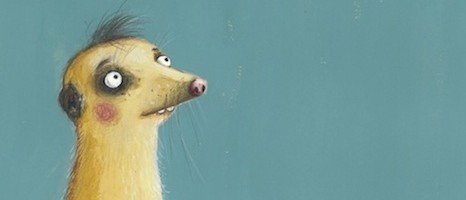
I Wish I Were a…
I will go on record and state, unequivocally, that meerkats are my favourite animal – of the undomesticated variety. I fell in love with these quirky critters in the last century, in a nature documentary, and as if often the case, my esteem for this observant little mongoose now encompasses a small collection of meerkat-related 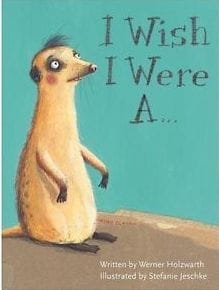 knick-knackery and various forms of printed matter, including the new picture book, I Wish I Were a… by Werner Holzwarth and Stefanie Jeschke.
knick-knackery and various forms of printed matter, including the new picture book, I Wish I Were a… by Werner Holzwarth and Stefanie Jeschke.
With their flat foreheads and bulging eyes, meerkats border on the homely, but my admiration stems not from their physical beauty, though they are achingly sweet-faced, but from a cluster of qualities that are equal parts socially ingenious and endearing. It is their personality, in other words, that makes them truly loveable. With all this going for them, who would have thought a meerkat could be insecure?
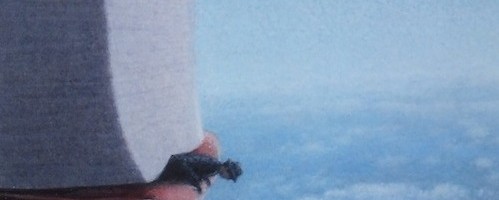
Im Land Der Bücher ~ In the Land of Books
*Reading is the dream through foreign hands* Fernando Pessoa
 Im Land Der Bücher. In the Land of Books. As the title suggests, Im Land Der Bücher is a book about books; about the sometimes strange relationship we have with words, and the myriad states of being one assumes while lost in the pages of a good book. The illustrations in Im Land Der Bücher are not just extraordinarily evocative, they are also beautiful, and funny, and a little bit mournful; words that could describe virtually all paintings by Quint Buchholz, the German artist whose past subject matter includes elephants lumbering down the snowy streets of Canada, a quintet of musicians teetering on a rock, and a man playing a cello on a deserted field while a giant snail, his only audience, oozes by in the distance. In his newest book, Buchholz paints a woman in a bathtub, floating on the ocean. She is reading, and does not notice the beluga whale passing underneath. Where has this book taken her? Though not yet published in English (the author kindly provided a translation), Im Land Der Bücher is a fantastical journey worth taking in any language.
Im Land Der Bücher. In the Land of Books. As the title suggests, Im Land Der Bücher is a book about books; about the sometimes strange relationship we have with words, and the myriad states of being one assumes while lost in the pages of a good book. The illustrations in Im Land Der Bücher are not just extraordinarily evocative, they are also beautiful, and funny, and a little bit mournful; words that could describe virtually all paintings by Quint Buchholz, the German artist whose past subject matter includes elephants lumbering down the snowy streets of Canada, a quintet of musicians teetering on a rock, and a man playing a cello on a deserted field while a giant snail, his only audience, oozes by in the distance. In his newest book, Buchholz paints a woman in a bathtub, floating on the ocean. She is reading, and does not notice the beluga whale passing underneath. Where has this book taken her? Though not yet published in English (the author kindly provided a translation), Im Land Der Bücher is a fantastical journey worth taking in any language.

Lisbeth Zwerger and the Brothers Grimm
In my world, a new publication from Lisbeth Zwerger is an event. At the risk of veering into hyperbole, she is the Arthur Rackham of her generation and will be remembered well beyond her time on earth. Zwerger’s latest is Tales From the Brothers Grimm, a collection of previously published stories and a few new yarns, including The Frog King or Iron Henry, The Brave Little Tailor, Briar Rose, The Poor Millers’ Boy and the Little Cat, and Hans My Hedgehog. The stories chosen by Lisbeth Zwerger to illustrate and include in this book speak to her quirky sensibilities and unparalleled talent for visual storytelling. From beginning to end, Tales From the Brothers Grimm is an impressive and extraordinarily beautiful overview of an astonishing career.
Although Lisbeth Zwerger has a recognizable style, her work continues to evolve. Early in her career, she favoured the sepias and high contrast hues of her predecessors, in particular the aforementioned Arthur Rackham with whom she “…landed in a Rackham-vortex.”* His influence can be seen in Hansel and Gretel and The Seven Ravens, which are included in Tales From the Brothers Grimm. Although these stories and others from this period are lovely and possess  the seeds of what was to come, they fall within the continuum of classic children’s illustration, rarely transcending it. As her colours brightened, so did her playfulness. The true genius of Lisbeth Zwerger emerged alongside a deeper, richer palette fully integrated with a wit and visual complexity well suited to the peculiar world and work of the Brothers Grimm.
the seeds of what was to come, they fall within the continuum of classic children’s illustration, rarely transcending it. As her colours brightened, so did her playfulness. The true genius of Lisbeth Zwerger emerged alongside a deeper, richer palette fully integrated with a wit and visual complexity well suited to the peculiar world and work of the Brothers Grimm.
One of the best examples of Zwerger’s mature style is The Frog King or Iron Henry. In the first illustration, the King’s youngest daughter moves swiftly down a hedgerow in an attempt to outrun the amorous frog. The hedge appears to be a slice of plant tissue as viewed from under a microscope. Beautiful of course, but unusual and strikingly inventive. Who would have thought to do this but her? The frog is persistent, and when he asks to join the young lady in bed (‘I want to sleep in as much comfort as you’), she responds by throwing him against the wall, where he turns into a handsome prince. If only it were that easy.

Dwarf Nose
This morning, while reading Dwarf Nose, the German fairytale by Wilhelm Hauff and Lisbeth Zwerger, I was reminded of Karen Klein, the New York grandmother and bus monitor who was severely taunted by a group of boys on their way to school. Like everyone else who viewed the youtube video (one of the little creeps filmed the dreadful thing), I longed for retribution equivalent to the emotional abuse heaped on the poor woman, but how do you answer such shamefulness? In fairy tales, wickedness is punished, usually in some completely excessive and often spectacularly lethal way, which is not really appropriate (or possible) in the real world. Nevertheless, actions had consequences. In Dwarf Nose, a young boy, described as a ‘fine, handsome son, well built and quite tall for his age’, scolds an old crone for saying nasty things about his mother’s cabbages. Granted, she started it, but when the boy is cursed with the physical attributes he cruelly ridiculed in the old woman, I thought to myself, serves you right, ya little git.
However, I am certain 19th century delinquency is not the point of Dwarf Nose. Indeed, this unusually long tale by Wilhelm Hauff, a contemporary of the Brothers Grimm, is rather nuanced in spite of the mêlée at the vegetable stand. It is also the inspiration for a beautiful series of illustrations by the great Lisbeth Zwerger, who wields her own brand of enchantment, albeit across a modern and considerably less flinty land.
Typical of many fairy tales of the era, Dwarf Nose begins with a family of modest means whose suffering is made infinitely more acute by an unfortunate encounter with the supernatural. To help make ends meet, the cobbler’s wife sells fruits and vegetables at the town market, and her ‘handsome’ son Jacob encourages the local housewives and cooks to buy her wares, often carrying their purchases home for them. He is rewarded well for his efforts, returning to his mother with small coins, or pieces of cake. An old woman in tattered clothes approaches the stand, and proceeds to berate the quality of the herbs and vegetables on display. Wishing to defend his mother, the boy calls the woman a few choice names, casting aspersions on everything from her appearance to her overall filth. The crone ends up buying six cabbages, and upon his mother’s insistence, the boy carries the bags to her cottage. Let the weirdness begin…

Snow Elephants of Canada
Unequivocally, The Collector of Moments is a work of art. It is a picture book yes, sold in the children’s section of a bookstore, but it defies categorization, like Van Allsburg’s The Mysteries of Harris Burdick, or The Arrival by Shaun Tan. The illustrations are enigmatic, a sort of visual poetry caught mid-stanza before the swirl of imagery has settled. Not quite as obtuse as Magritte, or as twisted as Michael Sowa, but with the same weird juxtopositions of reality and fantasy. Or…I think it’s fantasy. I live in Canada and I’ve yet to see snow elephants, but perhaps my powers of observation are not as keen as Quint Buchholz, the German creator of this beguiling book. I’ll have to take a closer look.
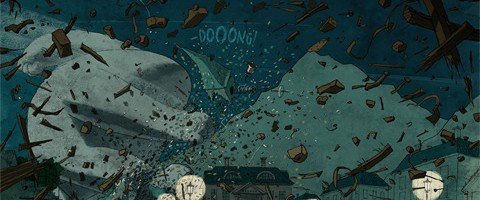
The Foreign Bookshelf
Along with the giddy anticipation of visiting great Scandinavian art museums and the fulfillment of a life-long dream of being in the same country that whelped ABBA, the prospect of foreign bookstores and the treasures therein was giving me the vapours weeks before my departure. Different cultural sensibilities, the promise of exciting new European illustrators…sometimes I feel like I’ve picked the shelves of my local bookstores clean, and trolling online can be hit or miss, especially when distraction arrives in the guise of a headline announcing the demise of Demi and Ashton’s marriage.
As expected, the WH Smith in Heathrow did not have any tasty items, but the small bookstore in the Frankfurt airport netted my first score-a Michael Sowa Christmas book, Der Karpfenstreit (The Carp Dispute.) The text was in German, but the illustrations were deliciously odd, more than enough reason to part with my Euros. Sitting in a cafe, drinking a cappuccino and waiting for my connection, I wanted to reach out to the older couple sitting at the same long table with me. “Look what I found!” Instead, I pulled out The Snowman by Jo Nesbø, and proceeded to read about bonhommicide in Oslo. Must remember, not everyone has a passion for picture books.

The Grimm Reader
There is no dearth of Grimm tales in children’s literature. In fact, Grimm was children’s literature for many years in the 19th century. What is fascinating is not the pervasiveness of the Brothers Grimm, but in the countless adaptations of their tales. Even the brothers themselves modifed the text in many instances, publishing mulitple versions of the same story within their lifetimes. As scholars, linguists, and archivists, their original intended audience was not primarily children but adults; they wished to chronicle the local, and in many cases oral storytelling of the German republic, and if a frog prince got hurled against a wall (instead of kissed) to break a spell, who would raise an eyebrow? Nevertheless, even their ‘PG’ versions were surprisingly and rather inventively violent, especially if you had the misfortune of being a stepsister, or stepmother. Apparently, blended families were the ticket to severe bodily injury, and occasionally a very painful death, which puts a whole new spin to the Brady Bunch when you think about it.
Now comes this new translation by Matthew Price, The Fairy Tales of the Brothers Grimm, a compendium of familiar and not so familiar stories in their original 1857 form: warts, revenge and all. Noel Daniel, the editor of this impressive tome does something quite unusual by casting the spotlight on the illustrators who helped to bring these fairy tales into the collective consciousness. Each of the 27 tales, in the order of when they originally appeared, are paired with some of the most influential illustrators of the 1820’s to the 1950’s. It would have been nice to see a few contemporary artists, like Lisbeth Zwerger, who is surely the most gifted visual interpreter of Grimm in the last fifty years, included alongside the roster of ‘famous’ illustrators, but this is a minor quibble. The Fairy Tales of the Brothers Grimm is beautiful, wicked fun.
Little King December
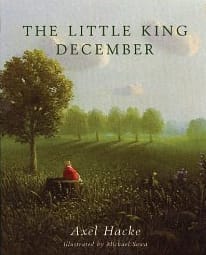 In this strange and beautiful book, an unnamed man relates the story of December II, the little pot-bellied king who visits the man from time to time, when the mood strikes. In King December’s world, you are big, and then you become small, and most curiously, you are born knowing everything you will ever know. As one would imagine in such a relationship, there are many things to ponder, on both sides, although surprisingly the presence of the miniature royal is never really questioned. “I’m only here because you wished it.” Well, maybe.
In this strange and beautiful book, an unnamed man relates the story of December II, the little pot-bellied king who visits the man from time to time, when the mood strikes. In King December’s world, you are big, and then you become small, and most curiously, you are born knowing everything you will ever know. As one would imagine in such a relationship, there are many things to ponder, on both sides, although surprisingly the presence of the miniature royal is never really questioned. “I’m only here because you wished it.” Well, maybe.
For many reasons, Little King December defies categorization. It is not a Christmas book exactly, but it belongs to the sugar plum month of December, from which the King’s own royal name derives, as sure as the ghost stories of Charles Dickens and Van Allsburg’s The Polar Express. The melancholic aching for things lost is the stuff of adulthood, but Little King December is distinctly childlike in its wide-eyed embrace of the whimsical and the wondrous. Familiar territory, in other words, for the absurdist German painter, Michael Sowa, the not so little King of Quirk.
I Stole This Book
Karline’s Duck is the only book I’ve brought with me from my childhood. This is not to suggest I had other books. In fact, I’m pretty sure this is the only book I owned. And…I didn’t really own it, I stole it from the Winnipeg Public Library, St James Branch, Boys and Girls Department. However, as I was not yet seven when my family moved from Winnipeg to Edmonton in 1970, I think it’s fair to suggest my parents stole it. I don’t know which one, probably my mother. She could be shifty. Or maybe I just tucked it away somewhere and it got packed along with my Barrel of Monkeys and my dear yellow blankie. When you’re moving a family of seven across western Canada in the five-seater Buick, contraband is the least of your worries. The fact remains that Karline’s Duck, so loved, so tattered, was not my book then, but it is my book now. It’s a matter of squatter’s rights. Karline’s Duck has squatted (so to speak) on my shelves for almost 40 years. I haven’t the heart to send her home now.



